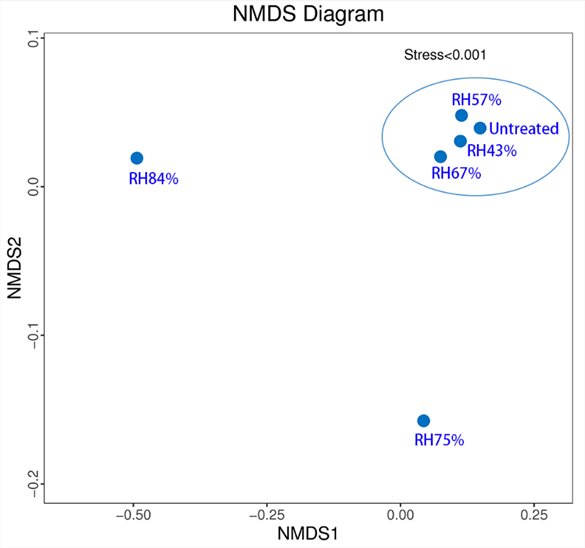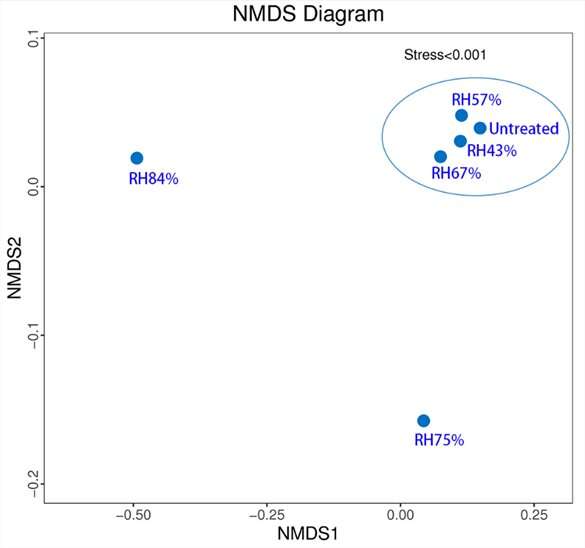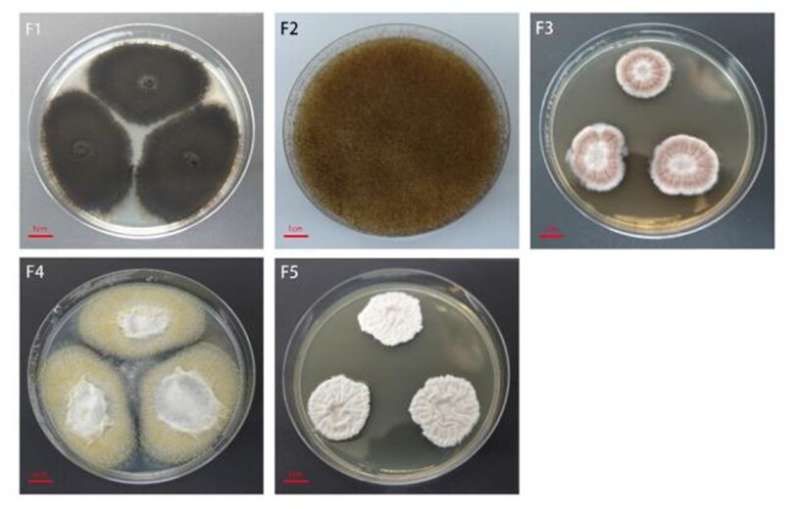

A research team led by Prof. Wu Yuejin from the Hefei Institutes of Physical Science (HFIPS) of the Chinese Academy of Sciences has revealed the source of internal mildew in sunflower seeds for the first time and proposed measures to avoid internal mildewing growth and entry of into the food chain. Relevant results were published in Microorganisms.
Sunflower seeds are rich in unsaturated fatty acids, proteins, and vitamins. During production, most internally moldy seed shells have a normal appearance and are difficult to identify and discard with the naked eye or color separation equipment. So far, there are few studies on the source of internal mildew in sunflower seeds, which brings great difficulties to the control and detection during production.
In this study, the scientists used high-throughput sequencing to investigate the relationship between microorganisms and internal mildew by accurately characterizing the fungal communities.
Results indicated that almost all the fungal genera identified in the internally moldy sunflower-seed kernels were associated with field infections, representing a total of eight genera and five phyla. And the predominant mildew-causing pathogenic fungi was Alternaria.
Additionally, sunflower seeds were most vulnerable to internal mildew during the field-planting stage.
Alternaria usually occurs during seed development and is suitable for multiplication under humid field conditions. Internal mildew seeds could lead to Alternaria contamination.

The team has come up with a solution: Low humidity during storage could inhibit the growth of Alternaria. After storing below the critical threshold (normal temperature warehouse, relative humidity 65–70%), the microbial community structure of sunflower-seed kernels hardly changed over the six months with the kernels keeping normal appearance.
“A combination of field management to combat Alternaria and drying at the time of storage will minimize or prevent internal mildew,” said Liu Jie, first author of the study.
They also found that for seeds with high water content or in non-primary producing areas with high relative humidity, physical irradiation such as γ-rays before storage can effectively prevent internal mildew.
This study provides an empirical framework for studies of other shelled seeds or nuts, which may reduce the risk of human exposure to internal mildewing.
A plant’s place in history can predict susceptibility to pathogens
Jie Liu et al, Characteristics of Fungal Communities and Internal Mildew Occurrence during the Stages of Planting and Storing of Sunflower Seed in China, Microorganisms (2022). DOI: 10.3390/microorganisms10071434
Chinese Academy of Sciences
Citation:
Scientists reveal source of internal mildew in sunflower seeds (2022, July 29)
retrieved 29 July 2022
from https://phys.org/news/2022-07-scientists-reveal-source-internal-mildew.html
This document is subject to copyright. Apart from any fair dealing for the purpose of private study or research, no
part may be reproduced without the written permission. The content is provided for information purposes only.